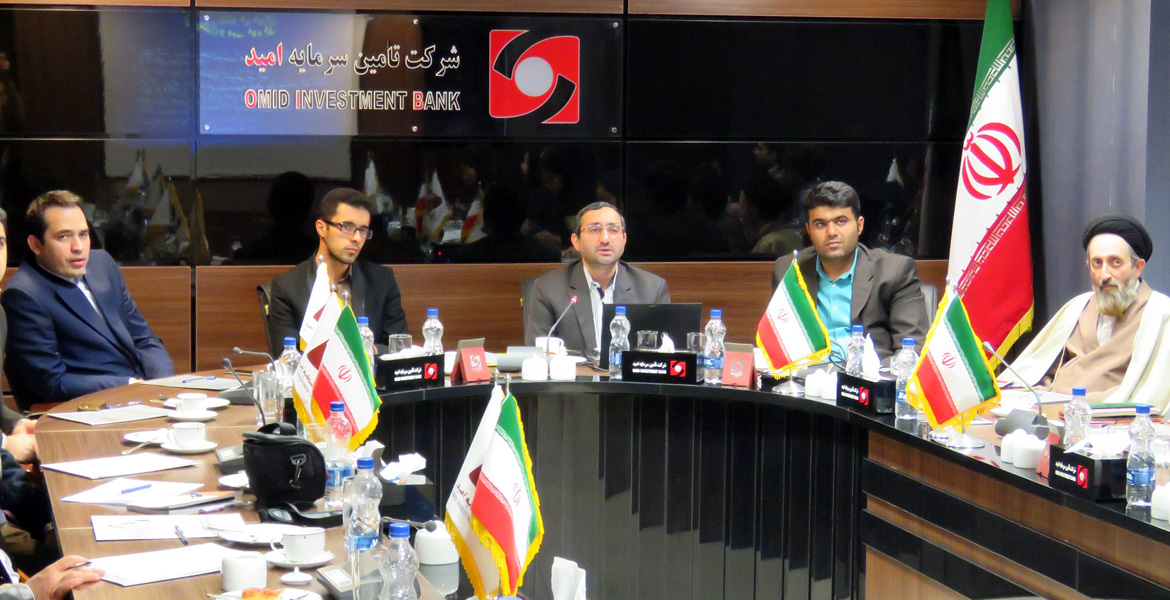
The IAIF held the 11th specialized session on the review of jurisprudential, legal and financial dimensions of financing the insurance industry on 20 Dec. 2016.
Dr. Saeed Sehat, Associate Professor of Allameh Tabatabai University and Chairman of the Islamic Insurance Committee of the Iranian Association of Islamic Finance, reviewed insurance linked securities, saying risk management in today world is one of the realities without which the continuation of activities may not be easy. However, methods such as crisis avoidance, mitigation, risk transfer, and the like are now used to manage risk.
Furthermore, he examined 4 different types of risks in the insurance industry and regarding the risks that the insurer accepts said that the insurer accepts and evaluates the risk on a thorough basis and receives the premium based on technical calculations to be able to compensate at the time of damages.
Regarding the risk of human resources at the technical level in the insurance company, experienced and specialized people must work and at the level of sales, professionals. Also, investment risk means that the investments must be made within the legal limits and always have enough liquidity to pay the damages.
Finally, the risk in the portfolio, for example, third party insurance in large amounts but life insurance in small amounts that creates risk in assets alone (portfolio).
Regarding the components of the issuance pattern of these bonds, he introduced two sections, namely the issuer companies and the sponsors, stating the issuers are usually organizations with specific purposes that are created for the issuance of these securities, for example by insurance companies (SPV) and sponsors; an insurance company or reinsurance company that supports operations.
Then Dr. Abdollah Daryabar regarding the requirements of securities in the insurance industry, pointed out briefly the needs of society and industry, investors' demands, sharia requirements, the license of the Securities and Exchange Organization, accounting and auditing considerations, tax considerations, legal considerations, and technical and operational considerations.
As to the benefits of insurance securities, he said creating long-term capacities in the capital market, the possibility of diversifying the portfolio of investors, transferring risk to markets outside the insurance industry, increasing the liquidity of low-liquid assets, cheaper financing than financing through Increasing capital and improving capital adequacy of insurance companies are important benefits of this method.
Regarding general solutions in the insurance industry, Omid Company's Vice President for Financing said regarding the occurrence of natural and unnatural disasters, insurance solutions can be related to traditional insurance or the use of reinsurance, but then the connection between the industry Insurance and capital markets as well as the conversion of risk into securities will be on the agenda. Finally, the issuance of insurance bonds called ILS or Insurance Linked Security is on the agenda.
Regarding the Cat bonds Dr. Abdullah Daryabar, said the conversion of the risk of accidents and natural disasters into securities in the capital market is the most important feature of these securities. Moreover, transfer of risk from insurance to the investor and financing insurance companies are two important parts of them.
Seller of securities; Reliance insurance companies are also a great instrument for diversifying the portfolio of capital market investors.
Regarding the benefits of the sponsor, he pointed to 5 main approaches, saying increase in insurance capacity, increase in capital indirectly, increase in the efficiency of insurance companies in terms of speed of time to receive potential losses, revenue generation of the sponsor company due to underwriting and other Sidecars management issues, reducing requirements of the sponsor’s capital and re-underwriting bonds by increasing insurance rates periodically will have favorable merits.
Regarding the interests of investors, he pointed out six main points:
1- Possibility of high yield of securities (reinsurance coverage of insurance policies with high insurance coverage rate by Sidecars)
2- Limited time period and specific risk range of these investors (type of insurance)
3- The possibility of proper diversification of the investor portfolio
4- Using periodic increase in insurance coverage rate (entering the market when the insurance coverage rate is high and leaving when the reinsurance coverage rate decreases due to the supply of more reinsurance).
5- Being important that the sponsor is both a sidecars customer and a specialized company with high experience in the field of insurance.
6- Possibility of launching a Sidecars company quickly (2 weeks in America)
At the end, seyed Mohammad Mahdi Hosseini Manesh, Islamic finance researcher and jurisprudential consultant of Omid Investment Bank, regarding the jurisprudential principles of Sidecars securities said natural disasters are transferred to the capital market. Instead of covering the risk of accidents and natural disasters at the hands of the reinsurance company, insurance companies transfer this risk to the capital market and its investors. They conclude a reinsurance contract with the intermediary company and deliver the reinsurance premium to this company.
This contract is a set of components whose components make sense in relation to each other, so that eventually the risk of insuring property destroyed in natural disasters is transferred to the capital market. Insurance companies transfer this risk to the capital market and its investors instead of handing out the risk of natural disasters to the reinsurance company. They ink a reinsurance contract with the intermediary company and deliver the reinsurance premium to this company.
He added the intermediary companies, which are mostly risk-taker financial institutions, make a contract, issue Cat bonds and pays a fixed profit for them. During signing the contract, the intermediary companies undertake to pay the sponsor company from the origin or a branch of bonds of both of them in case of an unforeseen event.
The jurisprudential advisor of Omid Investment Bank introduced the following 3 methods of paying interest:
First: the profit earned by the investment of the company’s funds, which is with the intermediary institution.
Second: Premium received from the insurance company
Third: the profit earned by the investment of this premium, which is with the intermediary institution


